My Amazon rainforest trip
A while ago, I spend a little time in the Brazilian and Peruvian Amazon rainforest. I was curious to learn more about this jungle also passing for the “Lung of the World”. In addition, it beats a couple of world records:
World’s largest river by volume of water
The Amazon is the largest river of the world by volume of water. In fact, it has more water than the next seven largest rivers combined. Of the 15,000 tributaries four are over 1,600 kilometres long.
The greatest jungle
It is also the largest rainforest in the world. Extending over 5 million square kilometres and covers 40% of South American territory. It contains one fifth of the world’s freshwater.
The Amazon rainforest is considered to have the highest biodiversity in the world.
The Amazon Basin spreads through nine South American countries
It spreads through nine South American countries: Brazil, Peru, Colombia, Venezuela, Ecuador, Bolivia, Guyana, Suriname, French Guiana. Brazil contains the largest section of the rainforest i.e. 60%.
Getting there
So, I landed at the surprisingly large airport of Tabatinga (NW of Brazil) and crossed the border to Leticia (Colombia) on a motorcycle. Unfortunately, it was only a few hundred meters of a fun ride.
Easy going immigration
Crossing a border normally entails passing through immigration. But not in this occasion. (This might have changed in the meantime). I just checked into my accommodation and, at my leisure time, went to the office in town to get my passport stamped. This was important as a more serious immigration procedure was waiting for me at the other end of my Amazon rainforest trip in Iquitos, Peru.
Changing water levels
As at the time I was working as an adventure tour leader, I passed through Leticia with different groups during the dry and the wet seasons of the year. I was amazed of how much the place changes. Can you believe that there is a river water dislevel of up to 8 metres between the two seasons? In fact, houses are either on stealth of floating all together.

Starting my jungle trip
The following day I started a walking tour through the jungle lasting 5 days. Sleeping in a hammock, listening to the rather loud jungle noises and not really washing was … well … part of the adventure. Not to speak of the various monkeys, snakes, spiders, including plenty of mosquitos, I got to see on the way.
Easy to loose orientation in the thick Amazon rainforest
I was amazed of how soon into the walk I lost my orientation (normally pretty good at that). But not being able to see the sun nor the night sky due to the thick foliage in the jungle I was glad to have Tatu, our jungle guide, to lead us through the jungle.

Tatu
Let me tell you more about Tatu. His nick name stands for “small” in the local language. In fact, he was of a rather small stature. On the first walk through the jungle I was really impressed by his knowledge and expertise.
Where is he?
However, when I got to Leticia the second time Tatu was not to be found. Then, I received the information that he was in prison because he had gotten drunk and had misbehaved. So, I got him released and he promised that he will sober up for the next day. And he did. When I got to Leticia in the following tours, I knew where to find him …

Amazon River Cruise
We walked for five days direction Los Guadales. Somewhere on the shore of one of the many tributaries in the middle of the rainforest we were picked up by a river boat. It was now time to make our way to Iquitos on the Amazon River.
Many stops in-between
We stopped by many places: a leprosarium run by nows, the house of an artist near San Pablo de Loreto (his paintings easily go for 25K a piece), remote fisher villages, gold mining places with some dubious fellows around and tiny churches surrounded by water.
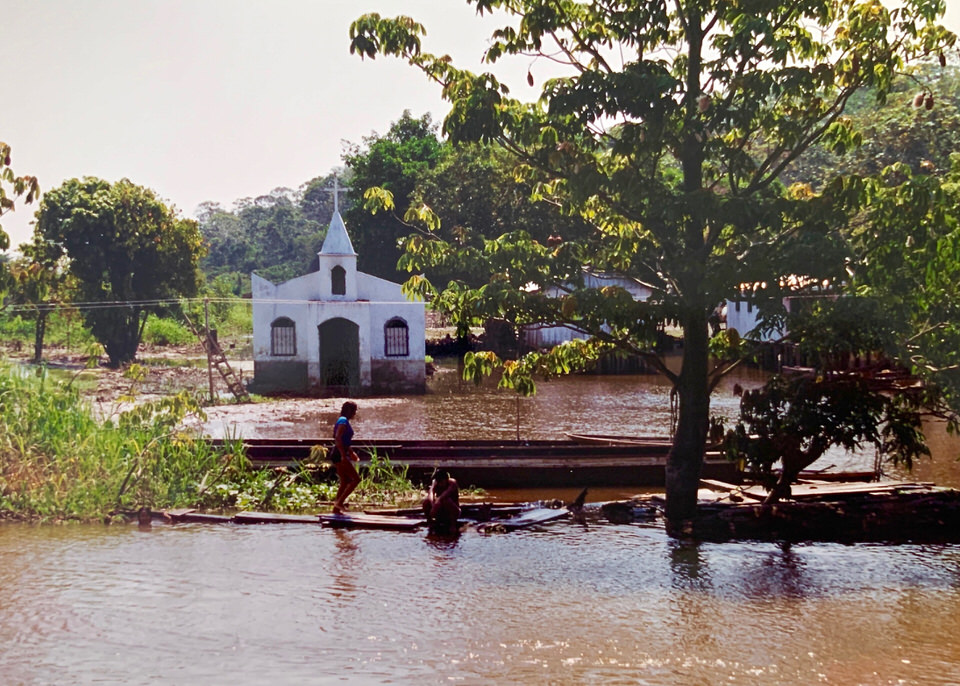
Piranhas
Activities also involved fishing piranhas which we then had for dinner. They are delicious. A must try!
It is well known that one should not swim in water where there are Piranhas. Well, I did. Call me unreasonable but the locals kids where having tons of fun in the river. I thought if they are safe I will be as well. In addition, I was seriously hot and sweaty. Well, here I am to tell the story.
Dinner raining into the dingy
Navigating the small dingy really close to the shore on our way back to the “big” boat, fish were startled, jumped out of the water and landed in our dingy. So, as said, dinner was provided for this evening.
Just coming from the Andes region
I was just coming from the Andes region where people are friendly but very reserved. No additional word is wasted during a conversation with them. This changed very much in the Amazon as here it was all about smiles and communication.
Inhabitants of the Amazon rainforest
Near large cities and towns, people have adopted a more advanced lifestyle. Some have a satellite dish on the roof, kids are sent to school and they have learned to take advantage of tourism. Good for them!
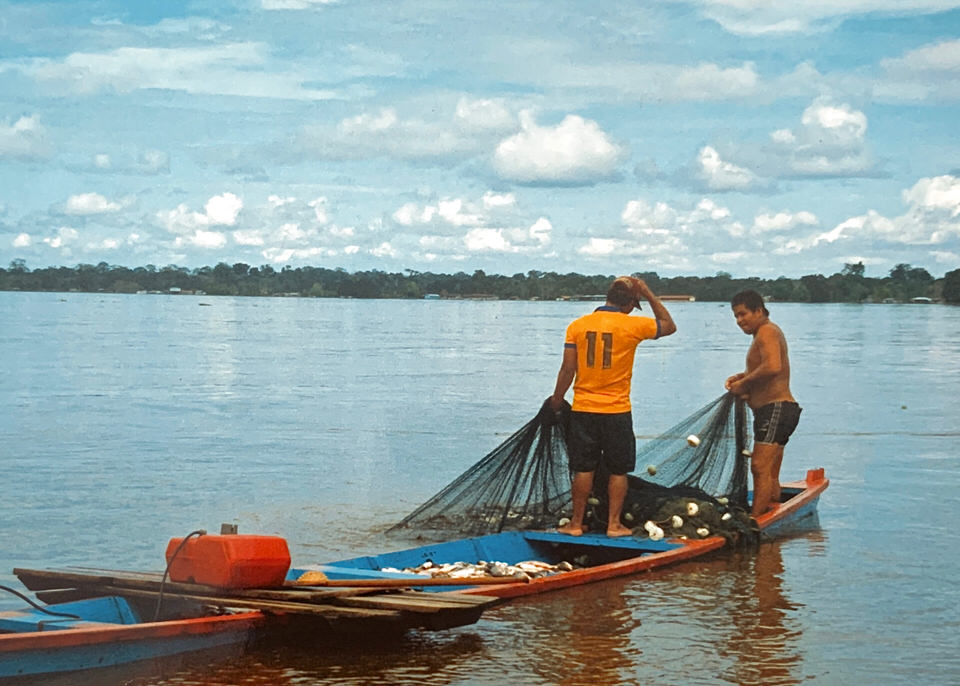

The Amazon rainforest is not only home to millions of species of plants and animals but obviously also to native people.
The Amazon rainforest population is decreasing
Research determined that the jungle has been inhabited for thousands of years. However, it appears that years ago it was more populated than today. In fact, nowadays only scattered remnants of natives still live in the Amazon.
Albeit, it has not been ascertained how many they are. Partly because it is believed that there are still groups living so deep in the rainforest that they have not yet been in contact with any modern man.
Deep into the Amazon rainforest
Deep into the jungle, these ethnic groups have their own distinctive language and culture. They still live much as their ancestors did thousands of years before them.
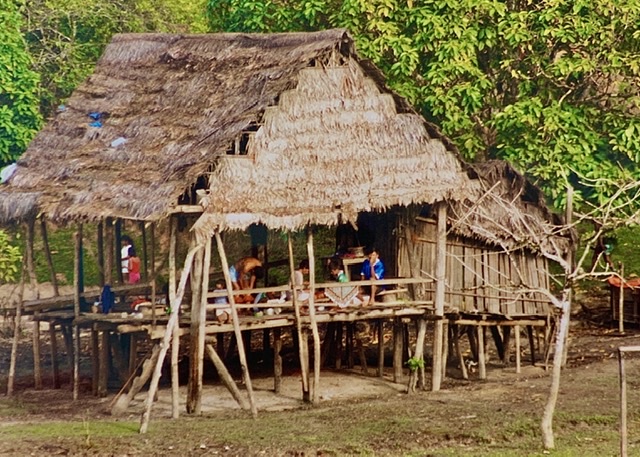
Hunters
We passed by a village where the men were all geared up to go hunting in the jungle. As you can see they had used some “plant ink” to camouflage themselves during their hunting expedition. Judging from their facial expression, they were not that happy to see us.
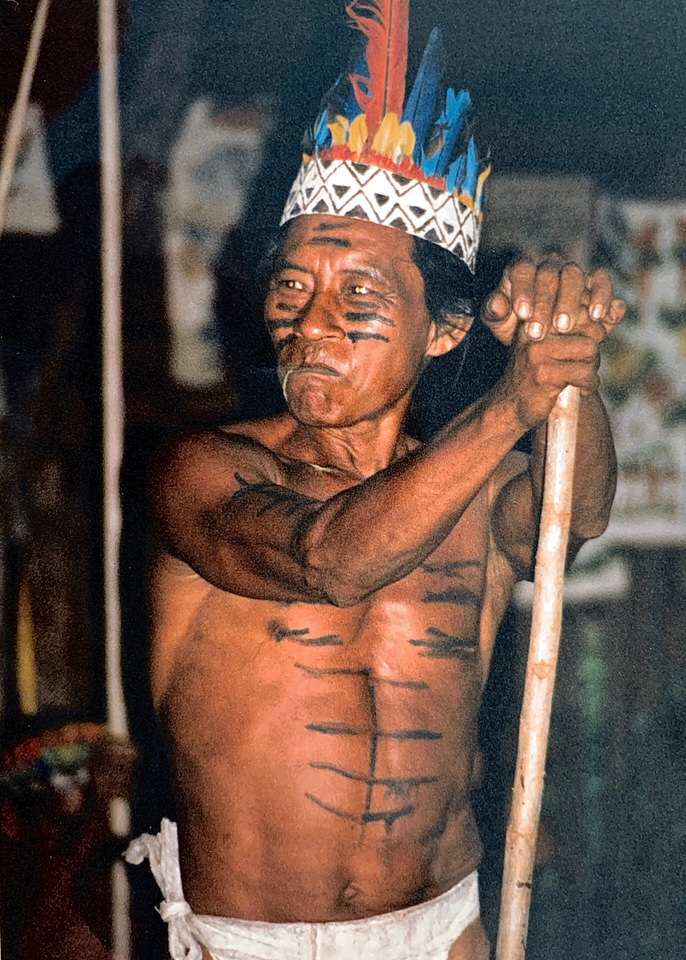
Children and schooling
The majority of kids of the indigenous people do not go to conventional schools. But they do undergo essential learning in other areas instead.

They learn how to fish, build a boat with wood of the surroundings, which plants to use for medical purposes, how to treat cassava before consuming it (otherwise it is sort of poisonous) and many more bits and pieces essential to survive in the jungle.
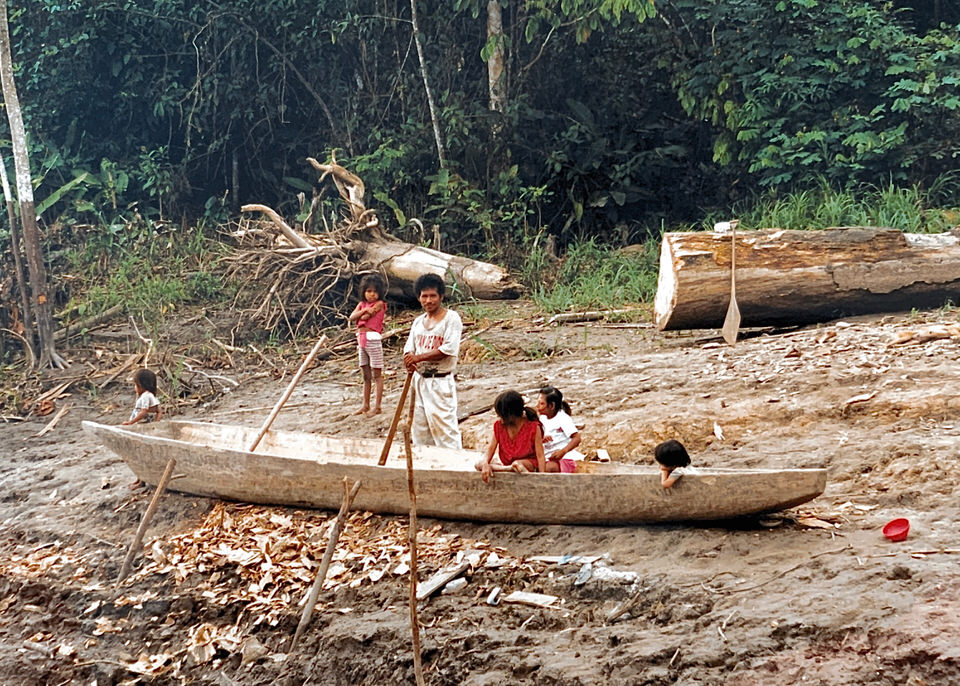
Cruising the Amazon River through the jungle and towards Iquitos
Once out of the tributaries we were on the main river. During the wet season it is so wide that at times it is hard to see the other side of the river. So, actually less interesting if it was not for the amazing sunsets that I saw.
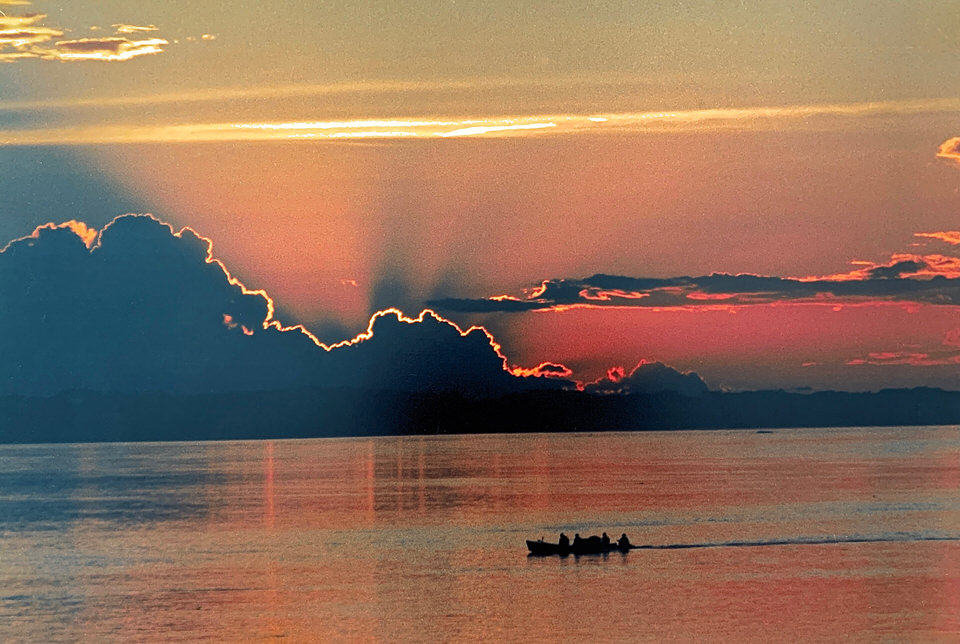
And really foggy mornings
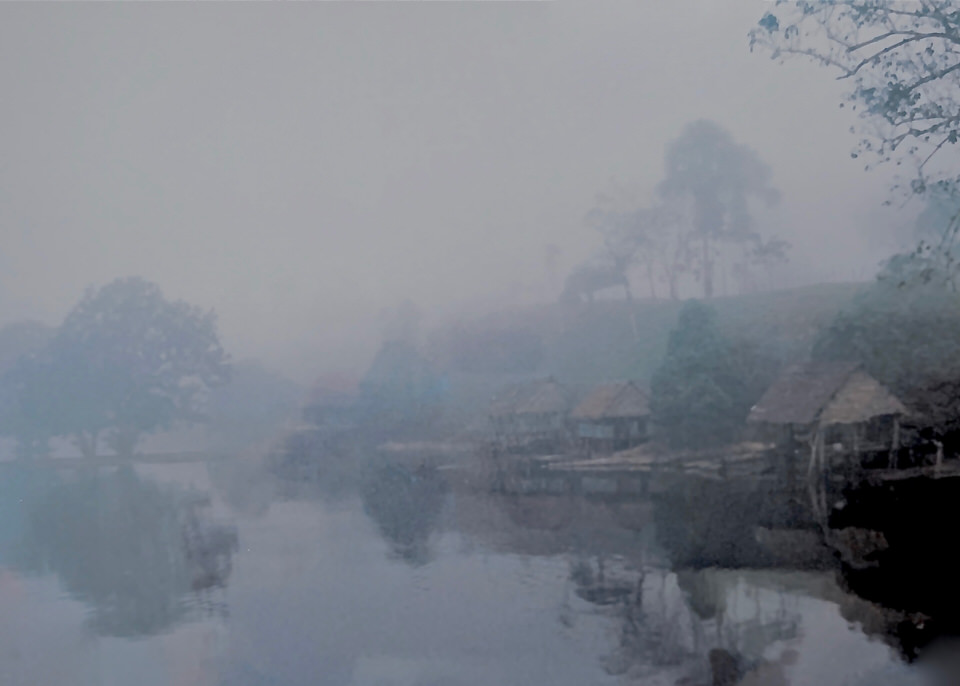
Iquitos
Eventually, we got to Iquitos. It is a modern and vibrant town. Amazing considering that it is in the middle of the rainforest thus surrounded by thousands of kilometres of jungle.
I have been to Manaus which probably offers more tourist attractions such as the meeting of the black and white river (I found it a bit disappointing); the “Ironhouse” and the incredible Opera Building carried in pieces all the way from Europe by Fitzgerald.
But I actually prefer Iquitos. It is more authentic. And the market is an experience on its own. Food sold here is incredible. Starting from grilled or fried larvae and moths, to monkey and turtle meat and much more that I actually could not identify. In other words, grilled grasshoppers are insignificant in comparison.
Conclusion
I have seen and learned a lot on the Amazon rainforest during my trips. However, it is so large that I would do similar trips again any time to explore more.
Read up on some useful and important advise before travelling to the Amazon.
Check out more posts on some adventure travelling I undertook such as crossing the Parnaiba River Delta or the “Route of Emotions” which is a five day car drive along the coast of northern Brazil.
I hope you enjoyed the read.


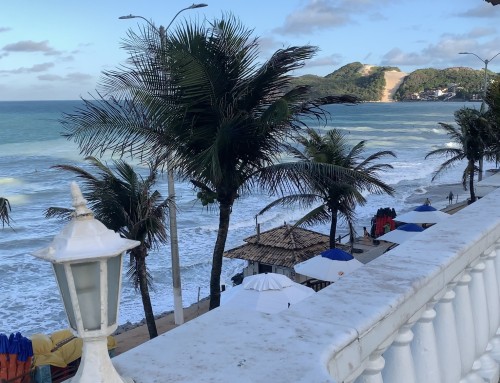
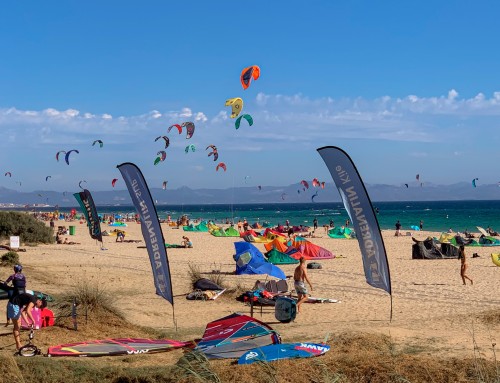
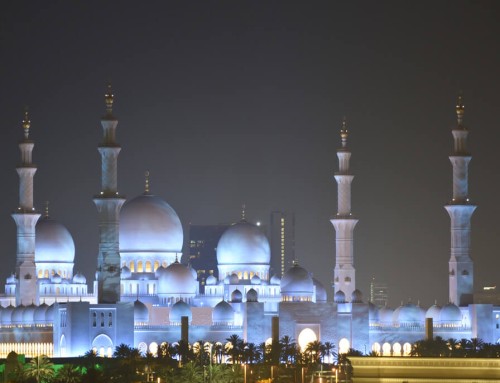
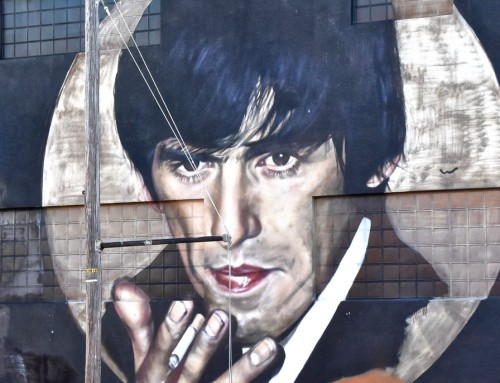
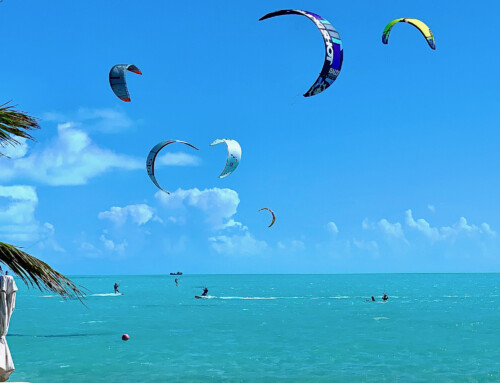
Leave A Comment
You must be logged in to post a comment.